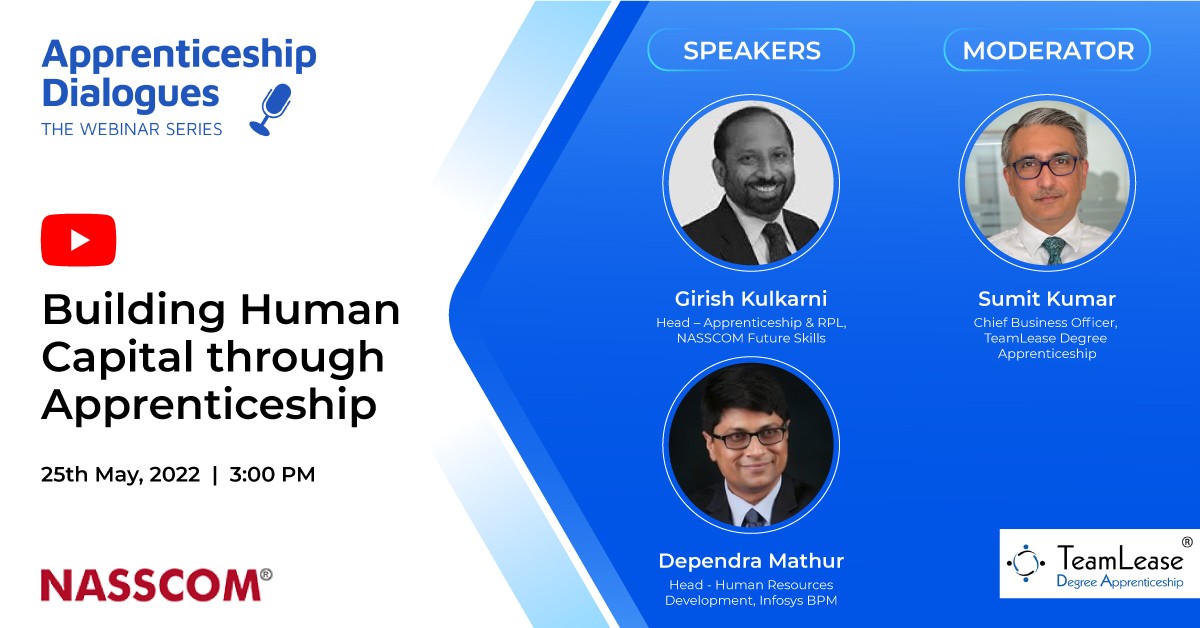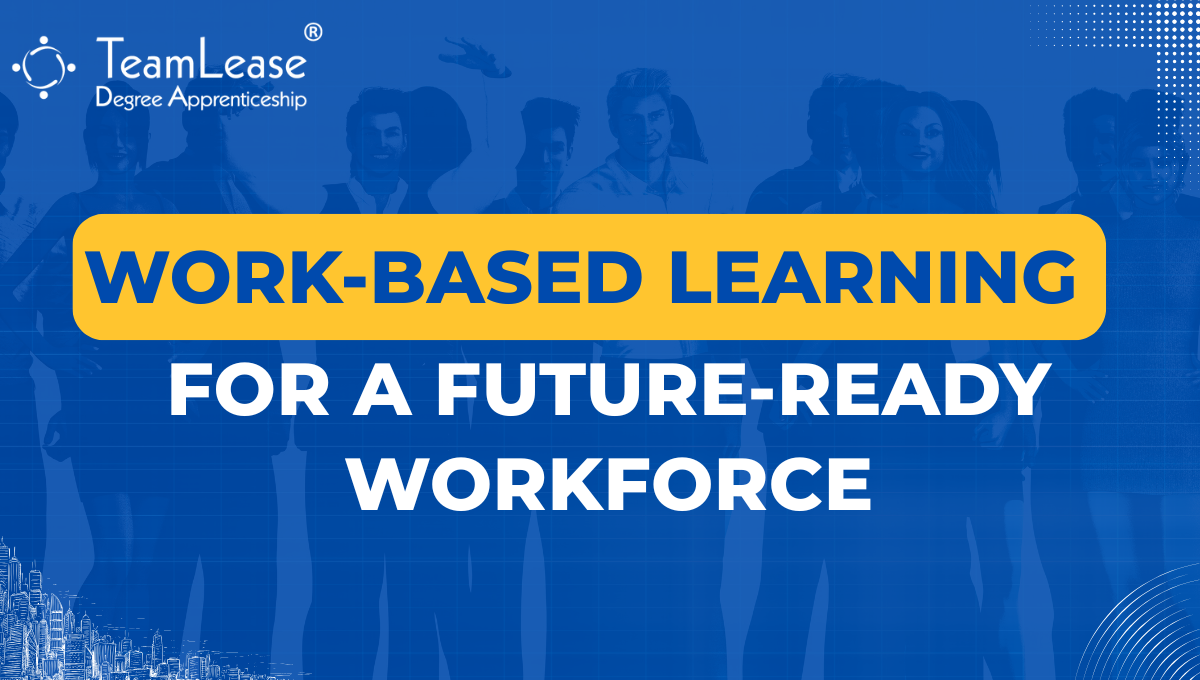TeamLease Degree Apprenticeships conducted another session of the Apprenticeship Dialogue Series on leveraging apprenticeship and creating human capital. The session focused on the IT sector currently facing headwinds, the operating margins declining and driven by supply-side challenges with higher talent, past attrition rate, and price pressures. The IT skill gap is getting significantly worse as organizations grapple with technical talent shortages and employee retention amid the ever-evolving IT landscape. In this session, we discussed and analyzed the talent situation in the sector, and looked at the possible solution to bridge the skill gap and how to create a talent supply chain that can futureproof the shortage.
On the Panel we had, Mr. Girish Kulkarni, Head – Apprenticeship & RPL, NASSCOM Future Skills, Mr. Dependra Mathur, Head - Human Resources Development, Infosys BPM, and Moderator, Sumit Kumar, Chief Business Officer, TeamLease Degree Apprenticeship (TLDA).
It's an interesting time for the IT industry now due to the rising demand for digital skills, which are coming from all across the world. Also, the COVID situation has made companies realize that they can grow and sustain their businesses and create better experiences for their customers if they go digital. Almost every company has no shortage of demand at this moment. But what seems to be constraining today's industry is the fact that there's not enough supply. This is leading to a good amount of churn in the industry, which does no good in the long run, as it is not sustainable and we can lose the competitive edge.
Nobody foresees a situation like this arising, which is now kind of impacting the entire business due to the short-term goal everyone was focussing on during the pandemic. A lot of companies and the industry as a whole did stop investing in talent, and creating talent outside. And that's why in all industries across the world on the IoT side, there is a big mismatch in terms of skills.
“Skilling is not a one-time thing. Companies have to always be in the running to ensure that they have the right kind of skills. This is a long-term game. When the new workforce comes in setting up its DNA in the organization at an individual level, skilling/upskilling is the only way to survive and sustain.” advised Mr. Girish Kulkarni, Head – Apprenticeship & RPL, NASSCOM Future Skills. Watch the video
 Initiatives for upskilling/reskilling
Initiatives for upskilling/reskilling
India has the most educated talent pool which can be skilled and put to work. Our work ecosystem is kind of evolving. And for that purpose, unfortunately, our academic system currently is not able to match up to this rising requirement. Students coming out of college sometimes lack the real value creation process, a key to future success and sustainability. Platforms like Coursera, and Udemy are all really flourishing businesses, providing free and paid courses and certification to students to upskill themselves with the skill sets required in the specific industry.
NASSCOM has gotten this initiative called Future Skill Prime, for the sustainability of skills in its organization. Courses on new ways to emerging technologies and soft skills are available for free for employees to access and use at any point in their careers.
On the other hand, ESG Infosys has got a very strong ESG vision. One of the aspects of the ESG vision is to equip 10 million people in 2025, across the world, with the latest digital skills, because digital skills will lead to the future employment of people.
Speaking of creating a skilled workforce in the future, people have not given enough thought to apprenticeships. For Mr. Kulkarni, apprenticeship has been his passion for three years now. And he believes that there's a misconception of apprenticeship being a slow-yielding investment. Hiring a fresh graduate or hiring an apprentice is almost the same thing. The company has to start with the training process anyhow. And if we're focusing only on institutions, and campus interviews then we’re only looking at only that smaller pocket. Organizations have to widen their neck and go to the interiors of the country, tier two, tier three cities, and use technology to train the talent without any expense of travel. Watch the video
 Apprenticeship and degree embedded course - catering to the requirements of all the stakeholders
Apprenticeship and degree embedded course - catering to the requirements of all the stakeholders
Apprenticeship has not been successful so far because it was not aspirational. Organizations were not kind of very keen to engage apprentices. And those who did just did it for the sake of compliance and cheaper labor. But if we look at the example of countries like Germany, they already have these developed systems, wherein even a candidate coming from an apprenticeship route also can be the CEO of the organization. Another thing is that apprentices up till now, have no academic system, and no credits in India. If apprentices are given a certain amount of credits, they can apply for future education or degree courses. Hence, the new education policy (NEP) is aligning credit with the completion of apprenticeships. So candidates enrolling in apprenticeship along with a degree course will give them a job guarantee and the company would get skilled manpower after going through that training process. A win-win situation for both.
If you found this conversation interesting, watch the full video here.




No comments yet
Your Comment